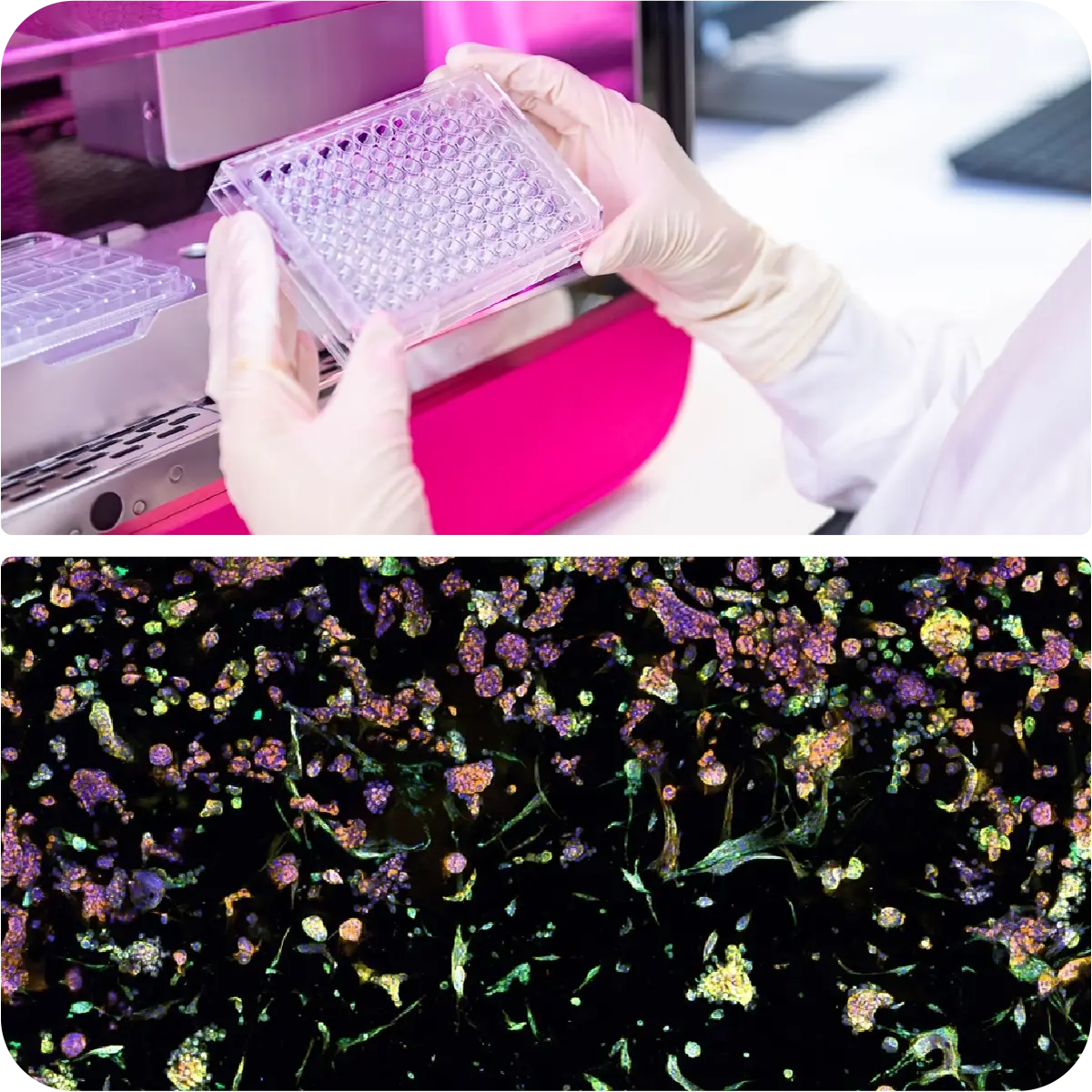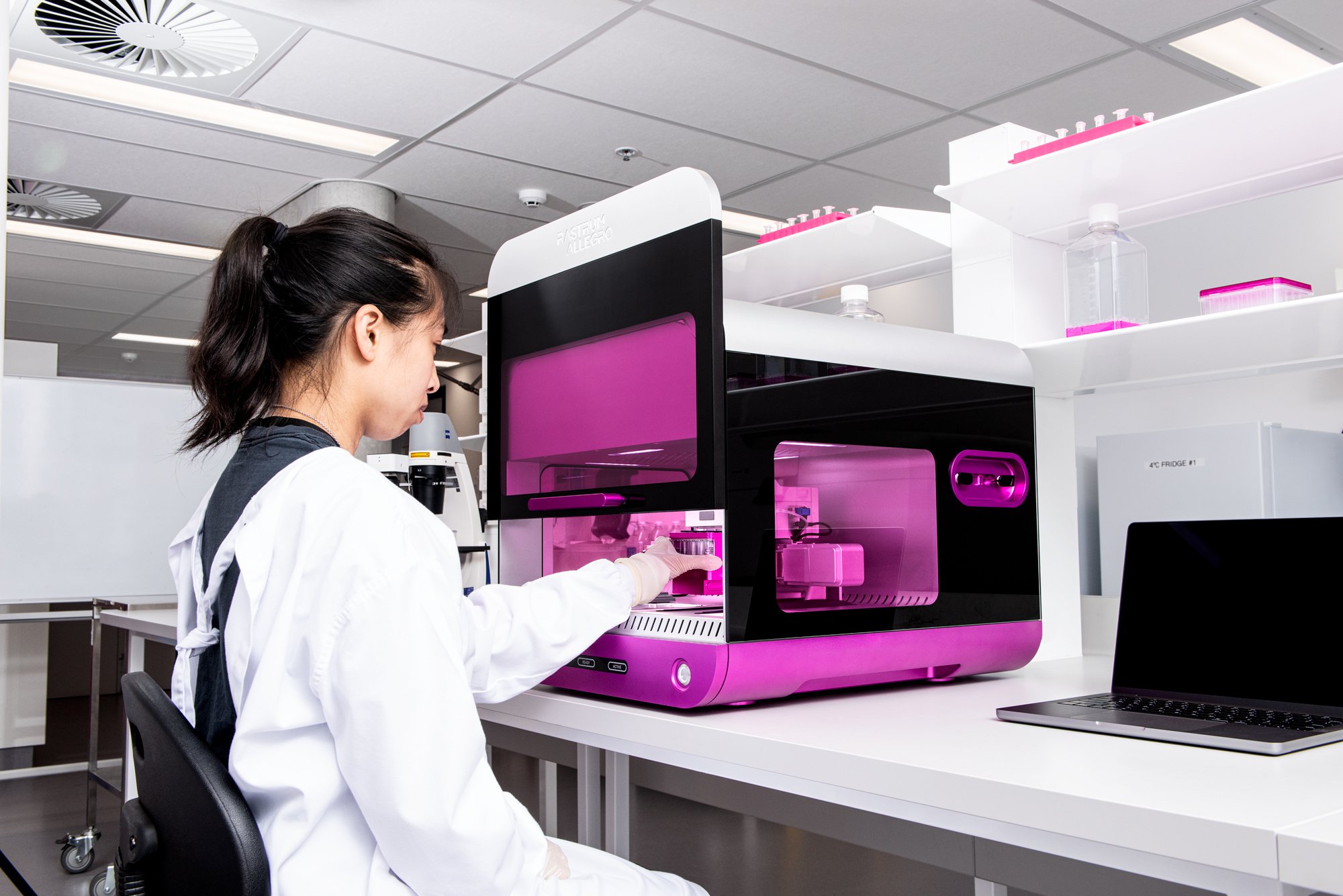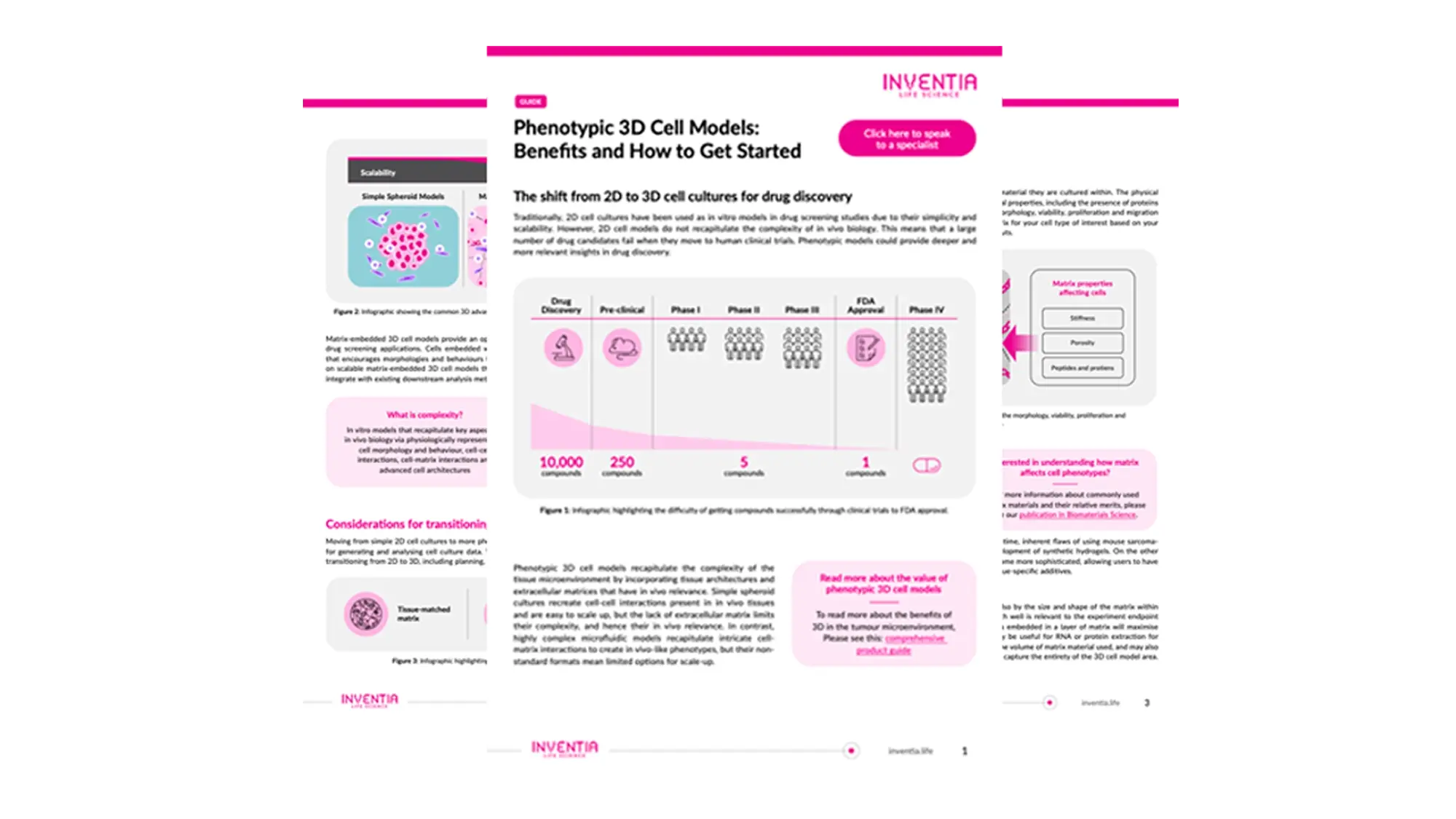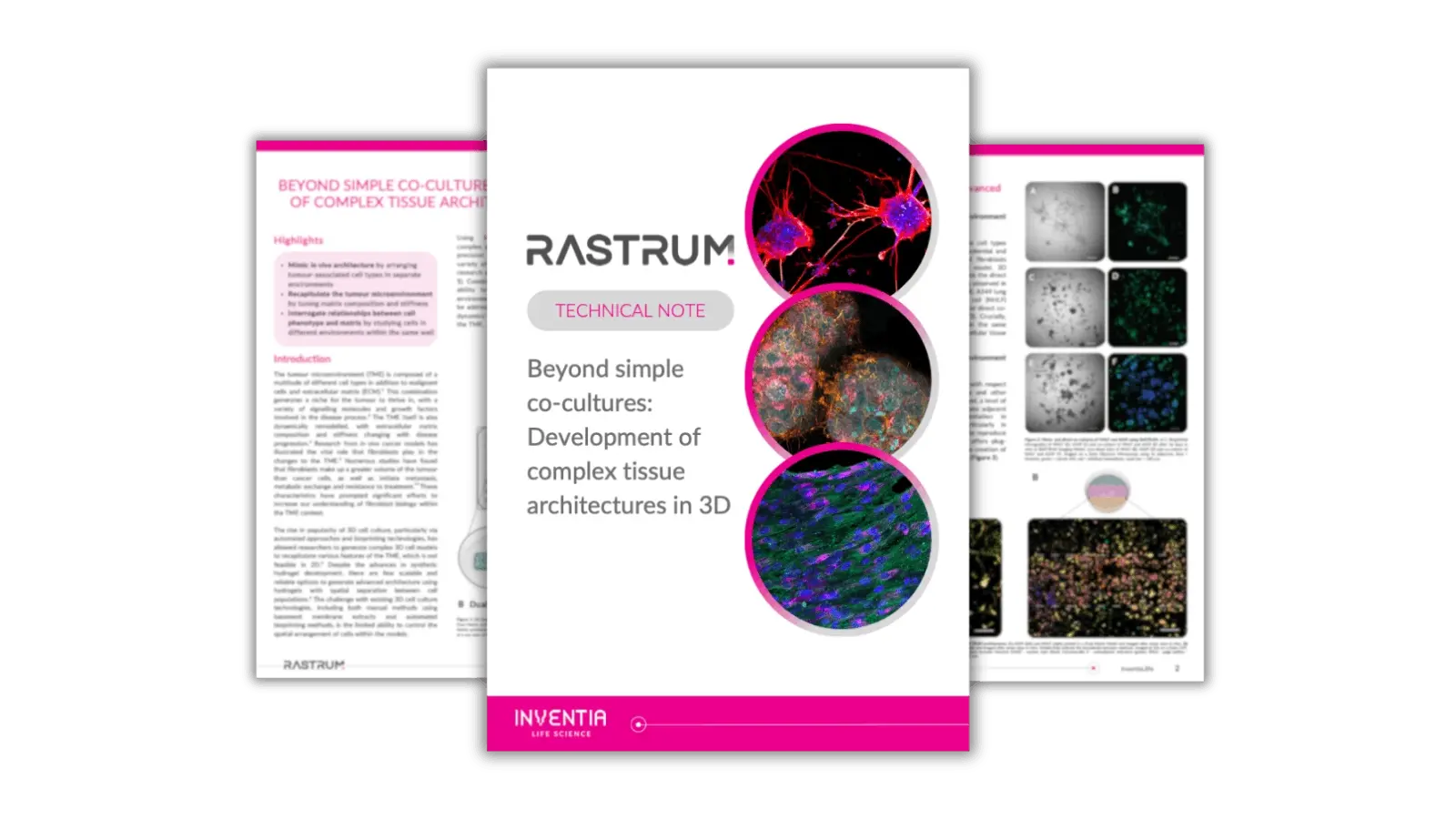Inventia Life Science | Advanced 3D Cell Culture Platforms and Scalable 3D Cell Models for Drug Discovery, Cancer Research, and More

Biologically relevant 3D models. Designed for discovery, built for decisions.
Create disease-relevant, assay-ready 3D models at scale—empowering confident decisions in drug discovery and translational research.How can RASTRUM help you?
Build complex, disease-relevant 3D models
Capture the biology of the tissue microenvironment with scalable, reproducible models tailored to your indication. Our advanced cell models support deeper insight into disease mechanisms, biomarker expression, and translational relevance.
Related Reading:
Beyond simple co-cultures: development of complex tissue architectures in 3D
A rapid and scalable framework for evaluating novel precision medicine strategies using biologically-relevant patient-derived 3D cell models
Investigating Connectivity Deficits in Alzheimer’s Disease Using a Novel 3D Bioprinted Model Designed to Quantify Neurite Outgrowth
Accelerate screening with models that reflect real biology
Conduct high-throughput phenotypic screens using 3D systems that better mimic patient response. Consistent, assay-ready architectures enable clearer signal, better hit selection, and fewer false leads.
Related Reading:
The tumor microenvironment in phenotypic drug discovery
Building better models of pancreatic cancer: development of a scalable 3D cell culture framework to evaluate novel immuno-modulatory agents
High-throughput phenotypic screening with RASTRUM 3D cell models
Development of a reproducible, high-throughput, and screenable 3D PDAC model using the RASTRUM™ platform
De-risk and advance your most promising therapies
From early validation to lead optimization, the RASTRUM platform helps you test efficacy, explore mechanisms of action, and generate data that supports go/no-go decisions with confidence.
Related Reading:
Development of a reproducible, high-throughput, and screenable 3D PDAC model using the RASTRUM™ platform
Scalability and reproducibility for high-throughput biological modeling in 3D cell culture
Three-Dimensional Bioprinting of Human iPSC-Derived Neuron-Astrocyte Cocultures for Screening Applications

Integrated Enablement Partner
We’re more than a technology provider. We’re your partner in making advanced cell models a scalable, trusted part of your discovery workflow.Don't waste time trying to figure it out alone, or fully outsource and lose control. Our team works alongside yours to help embed advanced 3D cell models into your drug discovery process, giving you the in-house capability to generate meaningful data, faster.
Resources to empower your research
 Phenotypic 3D cell models: Benefits and how to get started
This guide will help you move beyond traditional 2D cell cultures, offering a deeper and more reliable starting point with phenotypic models for drug discovery.
Phenotypic 3D cell models: Benefits and how to get started
This guide will help you move beyond traditional 2D cell cultures, offering a deeper and more reliable starting point with phenotypic models for drug discovery.
 Beyond simple co-cultures: Development of complex tissue architectures in 3D
This technical note will help you explore the tissue microenvironment with 3D culture.
Beyond simple co-cultures: Development of complex tissue architectures in 3D
This technical note will help you explore the tissue microenvironment with 3D culture.
 Scalability and reproducibility for high-throughput biological modeling in 3D cell culture
This application note showcases how RASTRUM™ Allegro enables consistent and reproducible 3D culture across plates to support high-throughput drug screening and robust biological modeling.
Scalability and reproducibility for high-throughput biological modeling in 3D cell culture
This application note showcases how RASTRUM™ Allegro enables consistent and reproducible 3D culture across plates to support high-throughput drug screening and robust biological modeling.